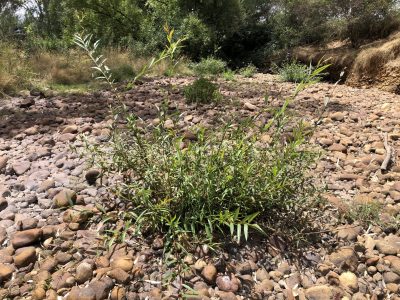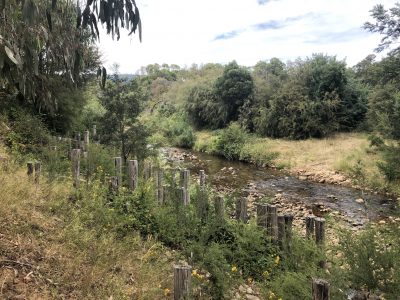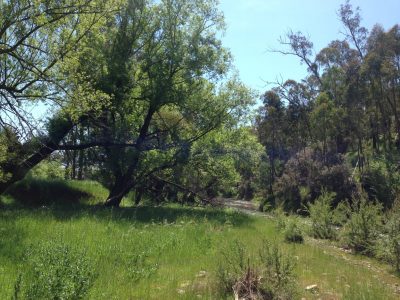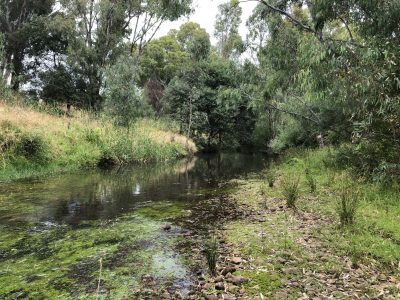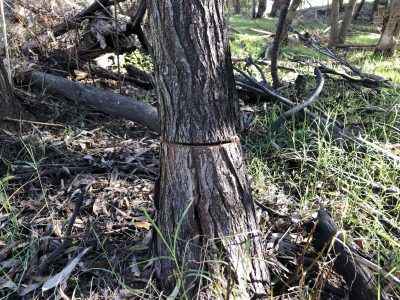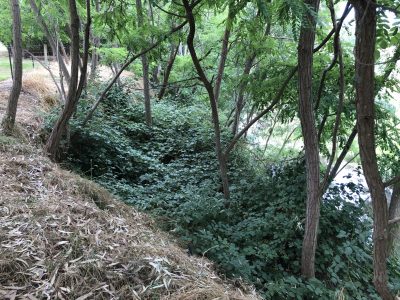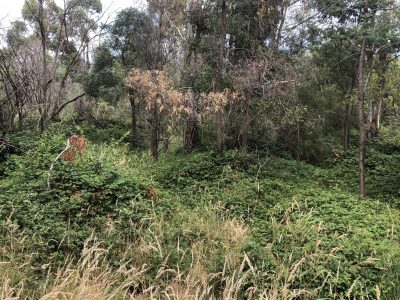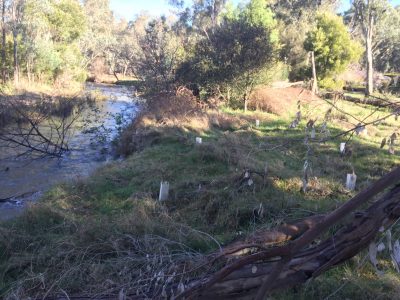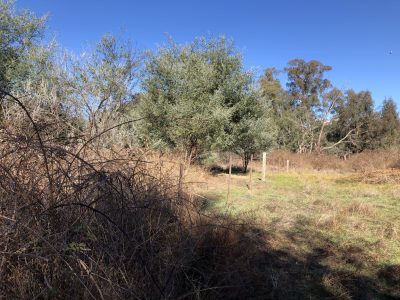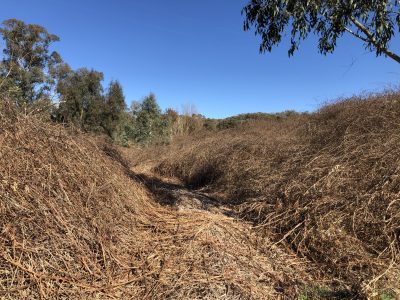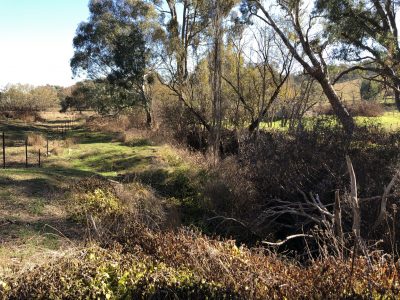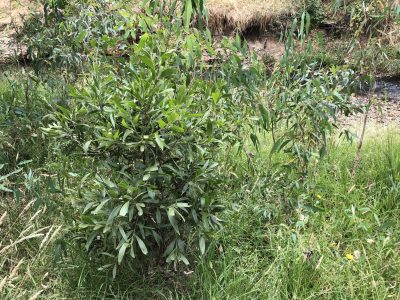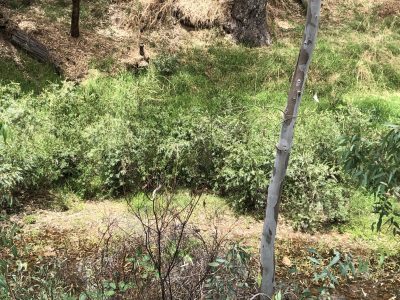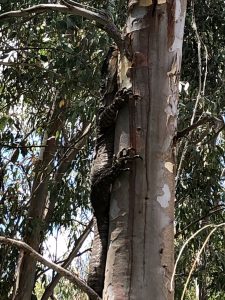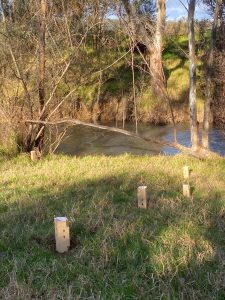Funding Source: WIRES – Landcare Wildlife Relief & Recovery Grant 2020
Timeline: July 2020 – May 2022
Funding received: $20 000
Project Description
Fifteen Mile Creek creek forms an important wildlife corridor and refuge in times of drought and fire. There are several sections of the creek where pools of water are retained during the summer. These important refuges are being taken over by invasive weeds including Cape Broom, Willows (Crack, Black and Pussy) and Blackberry.
The project site is Fifteen Mile Creek, from the Upper Fifteen Mile Creek Road, Myrrhee downstream to the Wangaratta-Kilfeera Road, Greta South. The length of waterway covered by this reach is approximately 25km. This section of Fifteen Mile Creek has been identified as a Priority Waterway by the North East CMA. The remnant vegetation quality varies along this reach of the creek. We know that there are permanent spring fed pools in areas along this reach which provide important local watering areas for wildlife in this area.
Our project is targeting the removal of invasive woody weeds on the Fifteen Mile Creek and revegetation with understorey shrubs to protect and enhance this riparian corridor for summer drought refuge.
Large scale willows control works have been previously completed areas by the CMA. Recently we are observing mass volumes of juvenile willows emerging on gravel bars and reshooting from cut willow stumps and these require control now to avoid the difficult task of tackling mature and large plants later. Follow up revegetation will be planted using indigenous midstorey plants, focusing on prickly shrubs for our threatened woodland bird community.
The objectives of the project are to:
- Improve riparian habitat for our threatened woodland bird community, to create a place of summer drought refuge with adequate shelter, suitable breeding sites and access to water.
- Protect instream habitat for aquatic species by reducing sedimentation caused by erosion. This includes the removal of instream juvenile willows (which will reduce outflanking and bank erosion in future) and guidance and support for land managers to address gully erosion on private land.
- Protect instream habitat for aquatic species by reducing the density of willow on banks, thereby reducing large amounts of leaf litter dropped during autumn into our waterways and encouraging the retention of timber in our waterways.
- Reduce further degradation of riparian habitat through the continued spread of invasive weeds including broom, blackberry and willow.
- Increase landholder engagement and education with respect to riparian weeds including broom, blackberry, willow and herbaceous weeds.
Landholder involvement
The grant funding received for this project is not large and we are trying to maximise the onground impacts of this funding. To this end, the landholders will be required to assist and work in partnership with the weed contractor to provide greater labour input, or will be asked to contribute financially to some of the weed control contractors time spent on the property. This will be negotiated with the landholder on inception of the project and reasonable time limits for work on each property will be established. The Committee has defined a cost share arrangement of 30:70 (landholder: grant funding) for any spray work done by contractors on the property.
The landholders will be asked to plant the shrubs on their property after the completion of the weed control. We have run large planting projects each winter for the last three years and have good handouts, guidance and assistance to offer members to help them with their revegetation effort. As is standard practice with our group, landholders will be asked to water revegetation over the first summer to maximise rate of establishment.
Outcomes
Over the past 12 months our group has delivered an extremely successful collaborative project engaging landholders between Greta South and Myrrhee. The outcomes of the project include:
– Control of 60.5 hectares of weed control, focusing primarily on blackberry, willow and broom, covering approximately 60% of the length of the creek through this reach.
– Planting of 1000 indigenous shrubs, including several species of prickly shrubs to specifically provide habitat for small woodland birds.
– Engaging 14 landholders, including 5 members new to Landcare, to complete the works across their property. Landholder buy-in included cash contributions amounting to 30% of the weed control costs and the planting and guarding of the shrubs on their property.
– All landholders participated in a detailed inspection of their creek frontage, including scoping a plan for weed control, advice for the management of weeds and erosion, discussion of best practice river management principles and planning for future management of their frontage.
– Two community workshops were delivered focusing on the principles of best practice riparian management as part of the initial engagement phase.
Our biggest achievement for this project was the leveraging of additional $21 000 in funding for weed control using this grant, from the following organisations:
– North East Catchment Management Authority
– DELWP through their Good Neighbour Program
– Rural City of Wangaratta
– Landholder cash contributions to the project.
The project was a very successful collaborative effort working together with our State and Local Governments, to achieve some fantastic onground outcomes for river health and our communities in this reach.
For all enquiries or further information, please contact Sally Day (Project Officer) on 0437 136 162.


